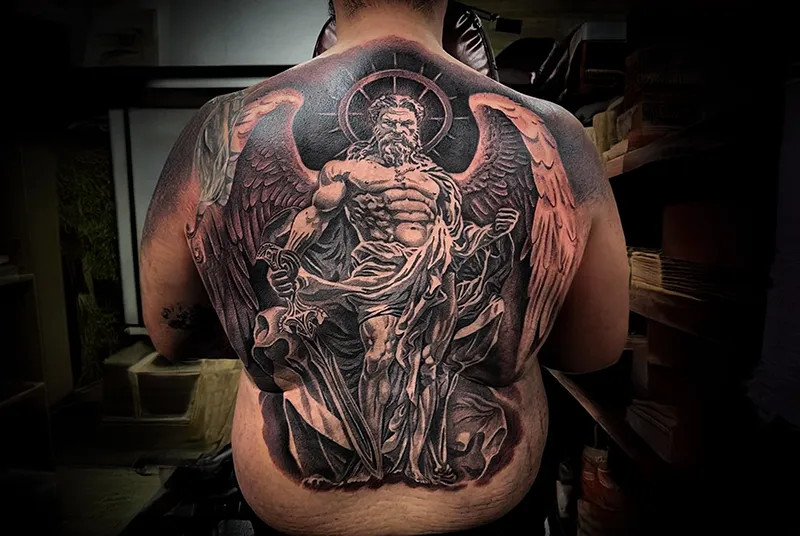Copenhagen has a rich and fascinating history when it comes to tattoo culture, making it one of the pivotal cities in the evolution of modern tattooing in Europe. Here’s an overview of the historical development of tattoo Copenhagen:
19th Century Beginnings
Tattooing in Copenhagen traces its roots back to the 19th century, particularly around the city’s bustling harbor areas. Sailors, who were often tattooed during their travels to exotic locations, brought the practice to Copenhagen. As a major port city, Copenhagen became a key site where tattooing spread among seafarers. These early tattoos were typically simple and often symbolic, reflecting the maritime life with anchors, ships, and nautical stars.
Pioneering Artists: Tusch-Hans
One of the most famous figures in Copenhagen’s early tattoo history was Tusch-Hans, also known as “Tattoo Hans.” Active in the early 20th century, he is considered one of Denmark’s first professional tattoo artists. His shop, located in the Nyhavn district, became a landmark for sailors and locals alike. Tusch-Hans is remembered for his traditional designs and for popularizing tattooing among the Danish population beyond just the maritime community.
Nyhavn: The Heart of Tattoo Culture
Nyhavn, a historic waterfront district in Copenhagen, became the epicenter of the city’s tattoo scene. In the early to mid-20th century, the area was filled with tattoo parlors, attracting not only sailors but also soldiers, adventurers, and later, a broader audience as tattooing became more accepted. This area is often referred to as the birthplace of professional tattooing in Denmark.
Post-War Era and Expansion
After World War II, tattooing began to expand beyond the working-class and seafaring communities in Copenhagen. Tattoos started to become more mainstream, with increasing numbers of people from different social backgrounds seeking tattoos. The styles also evolved, with influences from American tattoo culture and other international trends making their way into the Copenhagen scene.
Regulation and Professionalization
As tattooing became more popular, there were also efforts to regulate the industry. By the mid-20th century, professional tattooing in Copenhagen began to adhere to stricter hygiene standards and licensing requirements. This shift contributed to the professionalization of the craft and helped reduce the stigma associated with tattoos.
Modern Era: A Hub of Innovation
In recent decades, Copenhagen has solidified its reputation as a global hub for tattoo artistry by many studios with long history like the famous Tattoo Fashion Copenhagen. The city hosts numerous internationally renowned tattoo artists and has become a destination for tattoo enthusiasts from around the world. Annual events like the Copenhagen Tattoo Convention attract artists and visitors globally, showcasing the city’s vibrant and diverse tattoo culture.
Cultural Acceptance and Artistic Evolution
Today, tattooing in Copenhagen is seen as a respected art form, with a wide array of styles represented, from traditional and neo-traditional to minimalist, geometric, and hyper-realistic designs. The city’s Tattoo Copenhagen culture reflects Copenhagen’s broader cultural trends—blending tradition with innovation, and maintaining a strong sense of craftsmanship and artistic integrity.
Influences of the Tattoo Copenhagen and Styles
The legacy of Copenhagen’s tattoo history is seen not only in the number of skilled artists working in the city but also in its influence on the broader Scandinavian and European tattoo scenes. Copenhagen’s tattoo history is a testament to the city’s openness to new ideas and its role as a cultural crossroads.
Neo-Traditional and New School Styles: Copenhagen’s tattoo artists also excel in neo-traditional and new school styles, which blend the bold lines and vivid colors of traditional tattoos with modern themes and techniques. These designs are often highly detailed, with a mix of realism and stylized elements.
Nordic and Viking Influence: Many Copenhagen tattoo artists draw inspiration from Scandinavian heritage, incorporating Viking symbols, Norse mythology, and traditional Nordic patterns into their designs. These tattoos often feature intricate knotwork, runes, and representations of gods and mythological creatures.
Minimalist and Geometric Designs: A significant trend in Copenhagen is the minimalist and geometric tattoo style. Artists in this scene focus on clean lines, abstract shapes, and often use black ink to create striking, modern designs. These tattoos can be simple yet deeply symbolic.
Sustainability and Ethics: There is a growing focus on sustainability in the Copenhagen tattoo scene, with some studios using vegan inks, eco-friendly practices, and emphasizing ethical business practices. This reflects the city’s broader commitment to environmental consciousness.
Tattoo Fusion of Old and New: Copenhagen’s tattoo art scene often blends old-school tattoo traditions with contemporary art forms, resulting in a fusion of styles that are both timeless and cutting-edge. This reflects the city’s overall cultural vibe, which respects history while embracing modernity.


